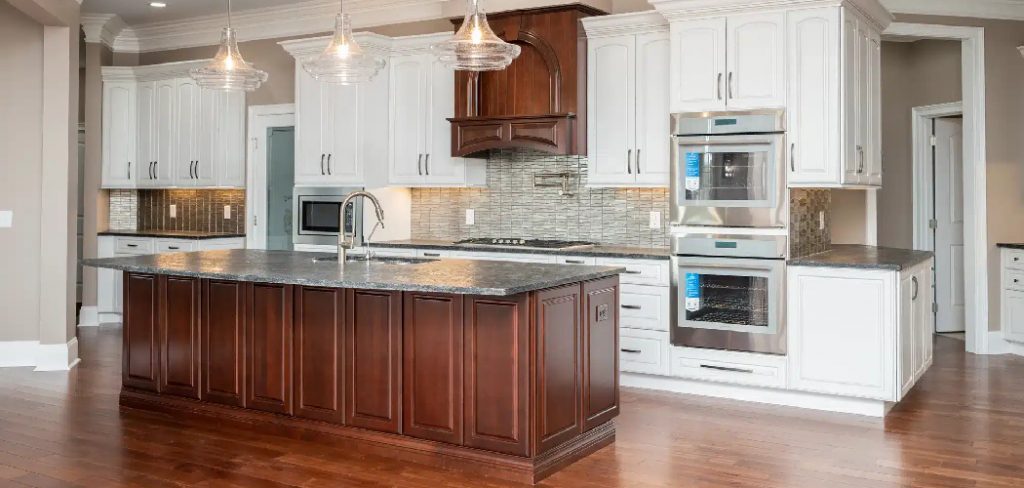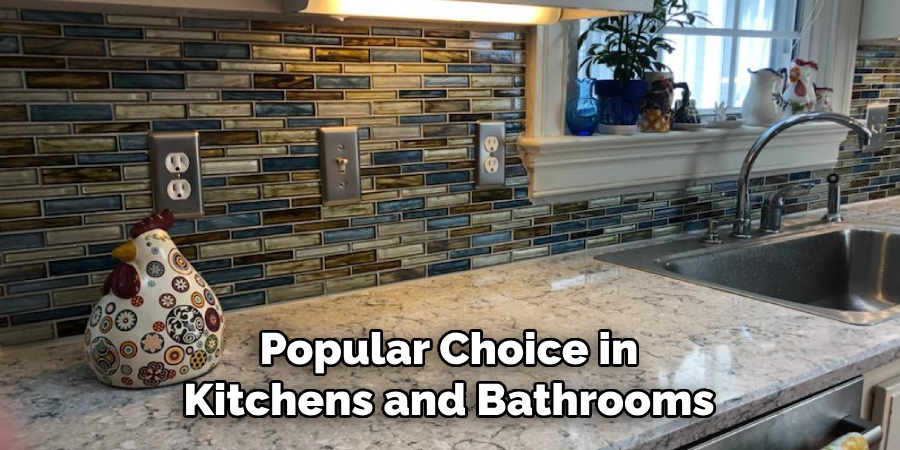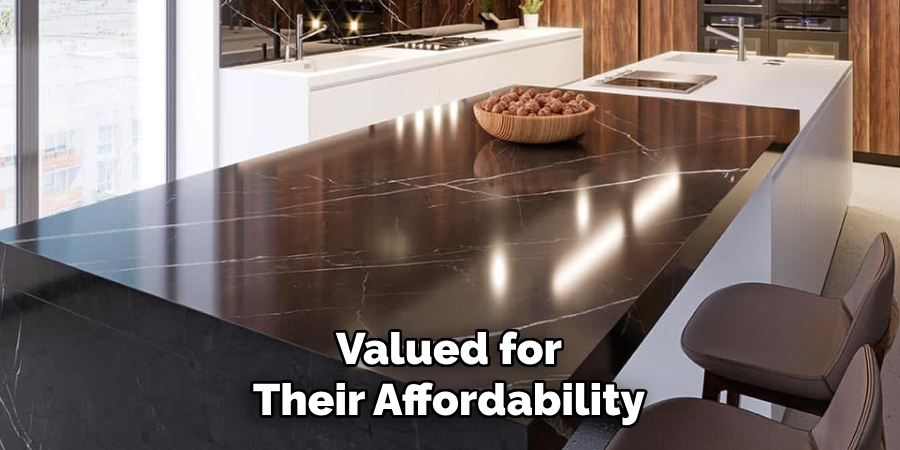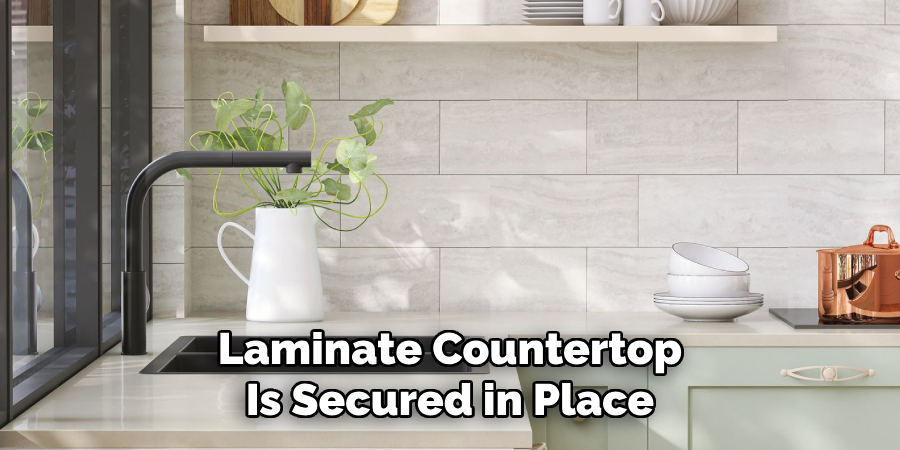Laminate countertops are a popular choice in kitchens and bathrooms, valued for their affordability, durability, and wide range of style options. These surfaces have been a practical and cost-effective solution for homeowners for decades. However, there may come a time when removal becomes necessary.

Common reasons for taking out laminate countertops include upgrading to a more modern or premium material, replacing surfaces damaged by wear and tear, or undertaking a full-scale remodeling project to redesign the space.
This guide is designed to provide you with a clear, step-by-step process on how to remove laminate countertops efficiently and safely.
From gathering the required tools and preparation to detaching the countertop and properly disposing of the material, every detail is covered to make the process straightforward. By following these instructions, you can ensure a smooth and hassle-free removal experience while preparing for your next home improvement project.
Tools and Materials Needed
Before beginning the removal process, gathering all the necessary tools and materials is important to ensure a smooth and efficient experience. Below is a list of essential tools and safety gear you’ll need for the job:
Essential Tools
- Utility knife – For scoring and cutting through caulk or adhesive seams.
- Pry bar or crowbar – Helps to lift and detach the countertop from its base.
- Screwdriver (manual or power drill) – Used for removing screws that secure the countertop to cabinets.
- Putty knife – Useful for loosening adhesive or caulk without scratching surfaces.
- Hammer – Offers leverage when using the pry bar and can assist in detaching stubborn pieces.
- Adjustable wrench – Required for disconnecting plumbing fixtures, such as faucets.
Safety Gear
- Work gloves – Protect your hands from sharp edges and splinters.
- Safety goggles – Shield your eyes from dust and debris during removal.
- Dust mask – Prevents you from inhaling dust or small particles.
Optional Tools
- Heat gun – Can soften adhesives, making them easier to remove.
- Reciprocating saw – Ideal for cutting countertops into smaller, manageable sections if necessary.
These tools and materials will help you safely and effectively remove your laminate countertops with minimal disruption.
Preparing the Workspace

Clearing the Area
Before removing your laminate countertops, ensure the workspace is clear. Start by removing all appliances, decor, and any other items from the countertops to provide an unobstructed surface. Relocate small kitchen gadgets, utensils, or anything else that may interfere with removal. To protect nearby cabinets and flooring, cover them with drop cloths or tarps. This helps prevent scratches, dents, or other accidental damage.
Shutting Off Utilities
Suppose your countertop includes a sink, shutting off the water supply before beginning is essential. Locate the shut-off valves under the sink and turn them off altogether to avoid leaks. Also, disconnect any electrical outlets close to your work area. This is a vital safety precaution to prevent electrical accidents as tools and water could be nearby.
Checking Countertop Attachment
Carefully examine how your laminate countertop is secured in place. Common methods of attachment include screws, adhesive, or caulk. Look underneath the countertop for screws or fasteners connecting it to the base cabinets. Make a note of their locations to streamline the removal process. This initial assessment will help you plan the tools and techniques needed to complete the task efficiently.
How to Remove Laminate Countertops: Detaching the Sink and Plumbing
Step 1: Disconnect the Water Supply
Begin by shutting off the water valves located under the sink. These valves control water flow to the faucet and are typically situated near the base of the cabinet.

Once turned off, use an adjustable wrench to loosen and disconnect the water supply lines. Be sure to place a towel or small bucket nearby to catch any residual water from the lines during this process.
Step 2: Remove the Sink Drain and P-Trap
Next, place a bucket directly under the P-trap to catch any remaining water or debris. The P-trap is the curved portion of the plumbing beneath the sink.
Use pliers or a wrench to unscrew the connections securing the P-trap and the sink’s drainpipe. Carefully remove them and drain any trapped water into the bucket. Inspect the removed pieces for condition, as they may need replacing during reinstallation.
Step 3: Lifting Out the Sink
If your sink is a drop-in model, use a utility knife to cut through the caulk or adhesive seal between the sink’s edge and the countertop. For undermount sinks, locate and remove the screws or brackets securing the sink to the underside of the countertop.
Once all attachments are removed, carefully lift the sink out of its position. Enlist help if the sink is heavy or awkward to maneuver. Set the sink aside in a safe location, ensuring no damage occurs to it or surrounding surfaces.
Removing the Backsplash and Caulk
Step 1: Cutting the Caulk Seal
Use a utility knife to carefully slice through the caulk where the backsplash meets the wall. Work slowly and methodically to ensure you do not accidentally damage the underlying drywall. This step is crucial for creating a clean separation and making it easier to detach the backsplash in the following steps.
Step 2: Detaching the Backsplash
If your backsplash consists of a separate laminate or tile piece, gently use a pry bar to loosen it from the wall. Insert the pry bar at the edge and apply steady pressure, being mindful of potential damage to the wall surface. For backsplashes integrated with the countertop, your focus should shift toward loosening and removing the entire countertop assembly, as they are connected.
Step 3: Cleaning Residue
Once the backsplash is removed, inspect the area for leftover adhesive and caulk. Use a putty knife to carefully scrape away excess material, ensuring the surface is smooth and ready for any subsequent installation steps. Taking the time to clean thoroughly will help ensure a polished and professional result when implementing new fixtures or materials.

Loosening and Removing the Countertop
Step 1: Locate and Remove Screws
Begin by looking inside the base cabinets for screws or brackets that secure the countertop in place. These are typically located along the top edges of the cabinets or at connection points where the countertop meets the wall.
Use a screwdriver or power drill to carefully remove the screws, ensuring all attachment points are addressed. Keep the screws and brackets in a labeled container to avoid losing them if they will be reused.
Step 2: Breaking the Adhesive Bond
Once the screws are removed, inspect the edges of the countertop for adhesive or caulk holding it in place. Use a putty knife or a pry bar to gently work under the edges of the countertop and pry it loose.
Apply steady, controlled pressure to break the adhesive seal without causing damage to the cabinetry or surrounding surfaces. If the adhesive proves particularly stubborn, use a heat gun to soften it, making it easier to separate the countertop.
Step 3: Lifting and Removing the Countertop
After the adhesive bond has been broken, enlist the help of a friend or family member to lift the countertop away from the base cabinets. Take care to lift evenly to avoid bending or cracking the material.
If the countertop is too large or awkward to maneuver as a single piece, use a circular saw or handsaw to cut it into smaller sections for easier handling. Ensure you wear safety goggles and follow proper cutting techniques to achieve a clean cut. Once removed, set the countertop aside for disposal or repurposing.
Disposal and Cleanup
Proper Disposal of Laminate Countertops
When disposing of laminate countertops, it’s essential to adhere to local waste management and recycling regulations. Some areas may have specific guidelines for disposing of construction materials, while others might offer specialized recycling programs. Check with your local waste disposal facility or recycling center to identify approved options.
If the countertop is in good condition, consider donating it to local organizations or reuse stores, as it might be of value for someone else’s project. Alternatively, consider repurposing the laminate for creative DIY projects, such as crafting shelves, workbenches, or other functional items. This approach not only reduces waste but also encourages sustainability.
Cleaning the Area
After the countertop removal, the area will likely be left with some adhesive or caulk residue. Use a scraper or putty knife to remove any remaining adhesive from the cabinet tops carefully, ensuring you don’t damage the surface. Applying a small amount of adhesive remover for particularly stubborn residue can help break it down for easier cleanup.
Once the adhesive is removed, thoroughly wipe down the cabinet tops with a damp cloth to eliminate dust and debris. This step ensures the surface is clean and ready to install the new countertop, promoting a smooth and seamless process.

Conclusion
Removing laminate countertops can be straightforward when approached with proper preparation and care. Key steps include preparing the area, detaching plumbing, eliminating screws, loosening adhesive, and carefully lifting the countertop.
Always turn off water and electricity to ensure safety throughout the process. Additionally, accurate measurements are crucial if you’re replacing the countertop to ensure the new one fits perfectly. By following these guidelines on how to remove laminate countertops, you can effectively complete the task while ensuring a clean and smooth transition to the next phase of your project.
Professional Focus
Angela Ervin, a former interior designer turned blogger, specializes in kitchen design and renovations. Through her website, she blends her passion for cooking with design expertise, sharing practical and creative ideas. Known for balancing functionality and beauty, Angela’s insightful content has made her a trusted voice in home design and lifestyle.
About the Author
Angela Ervin, an experienced interior designer and blogger, combines her passion for kitchen renovations with storytelling. Living in Petersburg with her family, she enjoys cooking and testing her projects firsthand. Known for her humor and relatable style, Angela shares creative, functional design insights through her content, making her a trusted voice in home design.
Education History
University: Virginia Commonwealth University
Degree: Bachelor of Fine Arts (BFA) in Interior Design
- Angela’s education at VCU focused on mastering core interior design principles, including spatial planning, color theory, materials selection, and sustainable design practices.
- She gained hands-on experience through studio projects and collaborative design exercises, which honed her ability to create functional and aesthetically pleasing environments.
- Her coursework also emphasized problem-solving and practical applications of design, preparing her for real-world projects like her self-directed kitchen renovations.
- The program’s strong foundation in both technical skills and creative expression shaped Angela’s ability to seamlessly integrate form and function in her work.
